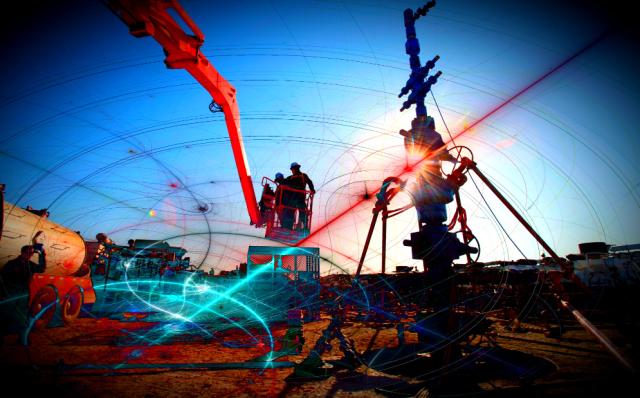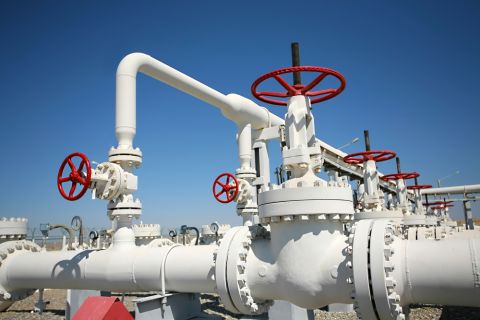
(Source: Hart Energy; Shutterstock.com)
[Editor's note: A version of this story appears in the July 2020 edition of E&P. Subscribe to the magazine here.]
While getting oil out of shale is not as impossible as say getting blood out of a turnip, it can be quite costly and not always as straightforward as an investor might expect. Producers are getting better at sorting out the producing stages from nonproducing ones. Options like fiber-optic sensing, production logging, DNA sequencing and chemical-soluble tracers have all had a role in better delineating production. However, there is always room for another option in the toolbox.
“If you look at the comparative technology landscape for flow profiling, 99% of all shale wells have no stage-by-stage flow profile information. Completion and reservoir engineers need to better understand what is happening with production down to the stage level on a regular basis,” QuantumPro CEO Talgat Shokanov shared with E&P. “Most of the technologies on the market are tailored for very costly deployment that requires downhole modification to the completion design or necessitate intervention.”
QuantumPro offers an alternative for determining flow in the form of its smart tracers. The tracers, according to Shokanov, are an inexpensive and efficient way to perform flow-based analysis that provides near-real-time results.
“The technology focuses on proprietary particles, where we have developed a cost-effective process that enables us to embed a unique fingerprint in each particle, which can then be used as a smart tracer or a smart particle for flow profiling in multistage hydraulic fracturing, EOR/IOR projects and SWD [saltwater disposal] wells,” he explained, adding that technology plays a pivitol role whenever there is a need to quantify and qualify the flow profile in the reservoir.
“In multistage fracturing, the value created by the use of these types of particles boils down to a few key characteristics,” he said. One is the inert and lightweight properties of the particles.
“They can work with various types of frac and reservoir fluids and maintain stability at high pressure and high temperature,” he said. “The particles are nonhazardous and nonradioactive materials, making them easier to handle from an environmental standpoint.”
Another characteristic is the ease of deploying the particles. Shokanov said the particles are placed in a liquid for deployment to avoid any occupational hygiene and issues of dusting around the hopper.
“When we deploy this at the frac hopper, we are talking about 5 to 10 pounds of material per stage, either at the beginning, middle or end—or all three portions of pumping the stage. Then during production the flowback samples are analyzed on daily/weekly basis using subatomic measurements,” he said.
The company can detect the composition of the particles in a sample with a high rate of accuracy.
“A single smart tracer can also be used for two types of fluid flow profiling: oil and water. By using one tracer instead of two, you save 50% of the cost of the tracers, and that cost saving is passed on to the customer,” he explained. “We can deliver results for up to six months in terms of flow performance down to the individual stage level.”
Those results, when married to artificial intelligence and deep learning for completion optimization, can help sharpen the focus and increase the industry’s knowledge of what is happening underground.
Recommended Reading
Brett: Oil M&A Outlook is Strong, Even With Bifurcation in Valuations
2024-04-18 - Valuations across major basins are experiencing a very divergent bifurcation as value rushes back toward high-quality undeveloped properties.
Marketed: BKV Chelsea 214 Well Package in Marcellus Shale
2024-04-18 - BKV Chelsea has retained EnergyNet for the sale of a 214 non-operated well package in Bradford, Lycoming, Sullivan, Susquehanna, Tioga and Wyoming counties, Pennsylvania.
Defeating the ‘Four Horseman’ of Flow Assurance
2024-04-18 - Service companies combine processes and techniques to mitigate the impact of paraffin, asphaltenes, hydrates and scale on production — and keep the cash flowing.
Santos’ Pikka Phase 1 in Alaska to Deliver First Oil by 2026
2024-04-18 - Australia's Santos expects first oil to flow from the 80,000 bbl/d Pikka Phase 1 project in Alaska by 2026, diversifying Santos' portfolio and reducing geographic concentration risk.
Ozark Gas Transmission’s Pipeline Supply Access Project in Service
2024-04-18 - Black Bear Transmission’s subsidiary Ozark Gas Transmission placed its supply access project in service on April 8, providing increased gas supply reliability for Ozark shippers.




